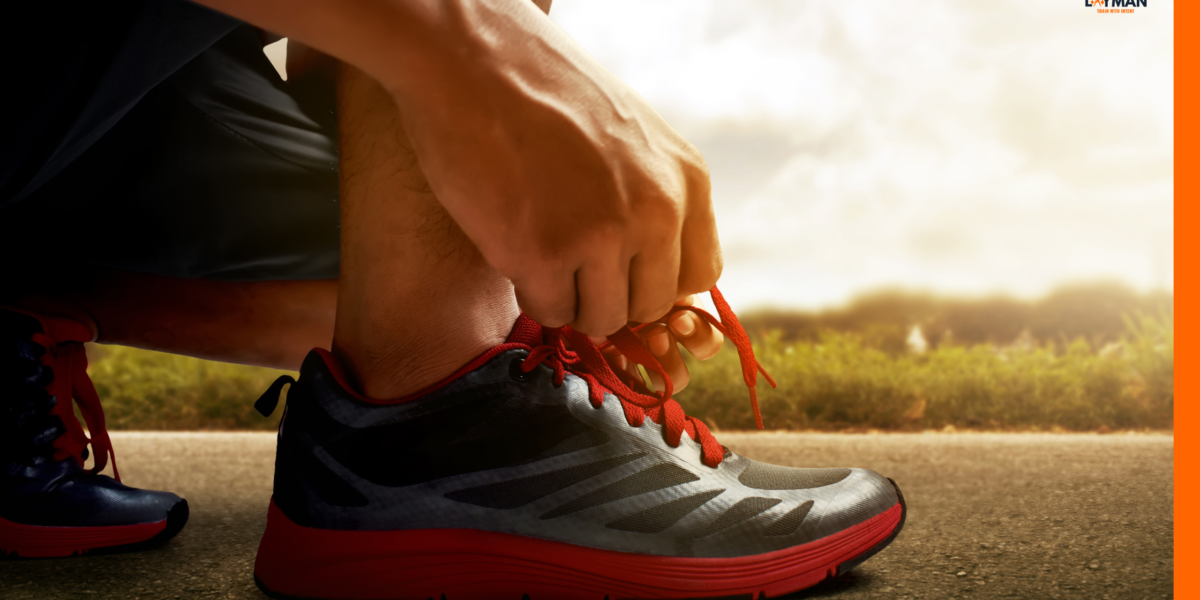To excel in running and resistance training, individuals must have sufficient mobility, flexibility, and stability. The foot is pivotal in establishing stability during movement and relies on a complex arrangement of four distinct joints. Moreover, the human foot boasts a built-in arch that aids in maintaining proper weight distribution across the foot tripod. This tripod comprises three essential points: the ball of the big toe, the base of the small toe, and the centre of the heel. Consequently, selecting appropriate training shoes becomes imperative as they support the natural arch structure and facilitate even distribution of body weight, whether in running or resistance training.
Factors to be considered while selecting shoes
- Sole Flexibility
When selecting footwear, the activity type should be considered. Running involves a full range of motion from heel to toe. In contrast, training consists of ground-based multi-directional drills and unsupported compound movements. For multi-directional drills, greater sole flexibility is necessary. At the same time, unsupported compound movements require a rigid sole that can withstand high forces.
- Heel Drop
The heel drop refers to the height difference between the heel and toe of the shoe. It plays a crucial role in supporting the heel. Weightlifting shoes with a higher heel drop and firm soles are advantageous for individuals with limited ankle mobility, as they provide stability during lifts. On the other hand, running shoes with a higher heel drop and flexible soles offer added support and cushioning for runners.
- Toe Box
The width of the toe box is another important consideration. A spacious toe box allows for ample toe movement, which promotes a solid connection with the ground and enhances overall stability. Both training and running shoes can benefit from a wide-toe box.”
Types of shoes available in the market
- Running shoes
These shoes utilize gel or air base materials to cushion the foot and absorb the impact when it hits the ground during running. This design minimizes the risk of stress injuries and enhances overall comfort for the wearer. Shoes like Nike Air, Asics Gel Excite, or Adidas Ultraboost have this property. However, if these shoes are used for activities like squatting or performing the snatch, it would be similar to exercising on a soft couch. The unstable surface would hinder the establishment of a solid ground contact, making it necessary for the foot to be as close to the contact surface as possible. The shoe should also support the natural arch position, allowing for proper foot tripod alignment and effective distribution of weight.
- Flat training shoes
Shoes like Canvas or Chuck Taylors have a rubberized flat sole that offers reasonable stability to the foot during unsupported compound movements. However, they have a downside: a narrow toe box and no heel drop. The heel drop is essential for individuals with stiff ankles and limited ankle mobility. Consequently, these shoes may cause discomfort during exercises like the squat and snatch, where maintaining an upright chest position is crucial.
- Weightlifting shoes
Olympic weightlifting is a sport that demands high technical proficiency. Suppose a lifter possesses sufficient technique, mobility, flexibility, and stability to position themselves successfully under a heavy load and maintain that position briefly. In that case, specialized weightlifting shoes, Nike Romaleos or Reebok Legacy Lifter, can be a valuable improvement tool. These shoes offer a heel drop ranging from 16 to 20mm, compensating for limited ankle mobility caused by stiffness in some lifters. It is important, however, for the lifter to continue working on mobility drills to enhance their range of motion. Nevertheless, these shoes are beneficial when performance is the primary focus.
Conclusion:
Suppose you have a limited budget and are unable to afford separate shoes for running and training. In that case, you should prioritize investing in a high-quality running shoe. In this scenario, they can manage their gym training sessions barefoot. Running involves high-impact forces that can negatively impact performance and increase the risk of injuries. On the other hand, training barefoot in the gym can offer the necessary stability without compromising performance.


